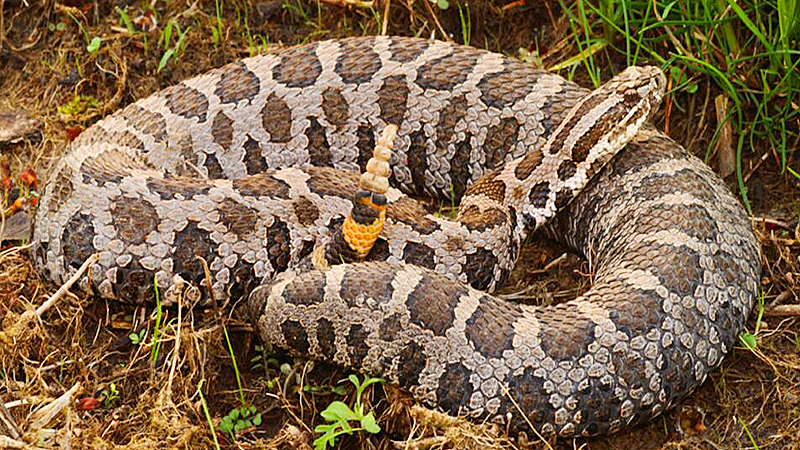Trumbull water project takes care for endangered rattlesnake

By ED RUNYAN
runyan@vindy.com
WARREN
Though the venomous Eastern Massasauga rattlesnake may seem intimidating, it is what the U.S. Fish & Wildlife Service calls docile.
“Although many people have an innate fear of Massasaugas, it is actually a secretive, docile snake that strikes humans only when it feels threatened and cornered,” the wildlife service says.
“Living, working, or recreating in Massasauga areas does require caution, but the Massasauga [snake] is also an important and beautiful part of the natural heritage” of the areas where they live, the service says.
Ohio listed the snakes as endangered in 1996 because of a significant decline in its population. It also was listed in 2016 as a threatened species under the federal Endangered Species Act.
The snake was believed to live in at least 30 Ohio counties at one time but now exists in only about eight or nine, including Trumbull. The breed was last observed in Trumbull County’s Mecca Township on April 28, according to recent research project.
For these reasons, the county is spending an additional $10,000 to construct its $14 million Prosperity waterline project from Braceville to West Farmington this year to ensure no Eastern Massasaugas are injured or killed during the construction.
Federal officials required the county to carry out a study before it could begin construction, which began recently.
Jeffrey G. Davis, an Ohio Department of Natural Resources-approved expert in amphibians and reptiles, carried out the study, which involved Davis traveling through waterline-project areas in Southington and Farmington in April looking for Massasaugas. He didn’t find any.
Davis determined one area in Farmington provided “excellent quality habitat for Massasaugas,” but he expressed doubt any would be spotted during construction.
Greg Lipps, who has conducted surveys for the Ohio Department of Natural Resources Division of Wildlife for 10 years or more, has “never recorded a Massasauga west of Mecca Township.”
Lipps even sent out post cards in March this year showing the Eastern Massasauga and asking anyone who had sighted one to contact him. No reporting of the snakes came back from Southington or Farmington, he said.
The other part of the $10,000 cost is for a certified snake expert to stand by during about 40 to 80 hours of the construction in Farmington to advise the contractor on matters related to the snake.
If one is spotted, the expert is not licensed to move it. Workers will have to wait until the snake leaves the area before work can continue, said Gary Newbrough, deputy county sanitary engineer.
Newbrough said it’s the first time in 40 projects he’s done since 1999 the sanitary engineer’s office has had to carry out this type of study and hire an expert to stand by.
Brett Rodstrom with the Western Reserve Land Conservancy based in the Cleveland area, said one of the “stronger areas” in Ohio where the snakes still exist is the Grand River Lowlands in northern Trumbull and southern Ashtabula counties.
“They are still there throughout the region in pockets,” Rodstrom said. “Being a rattlesnake, they don’t have a lot of friends.”
Rodstrom said the snakes are “susceptible to what we call the three P’s: plows, predators and poachers. What’s really decimated the population is loss of habitat by conversion over to farm land, poaching and the resurgence especially of raptors over the last 30 years.”
One reason the snakes were able to live in the Trumbull townships of Mesopotamia, Bloomfield and Bristol is because they “were traditionally pretty big swamps” and were not able to be farmed, Rodstrom said.
The Mosquito Creek watershed to the east also has modern records of Eastern Massasaugas. They probably existed at one time in populated areas in the southern part of the county, but the most recent recorded sightings have been in northern Trumbull, Rodstrom said.
Rodstrom admits people sometimes ask why a venomous rattlesnake like this should be protected.
“They are in somewhat peril and have declining populations. Because of that, we are always trying to figure out how to protect those species any way we can,” he said.
The conservancy acquired about 74 acres off Townline Road in Bloomfield called the Bloomfield Wetlands in 2013 to protect land that provides a habitat for a variety of wildlife and plant species including the Eastern Massasauga.
The smallest of rattlesnake species in Ohio, the Eastern Massasauga generally grows to between 18 and 22 inches in length and likes wet areas.
 43
43
